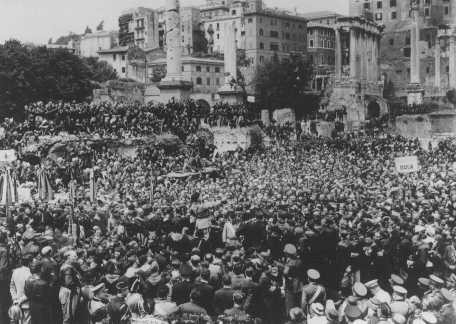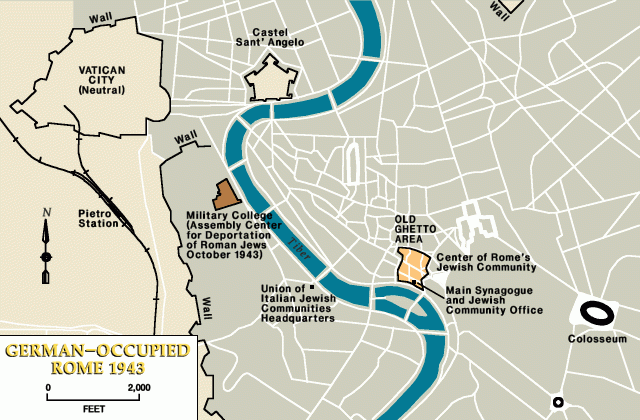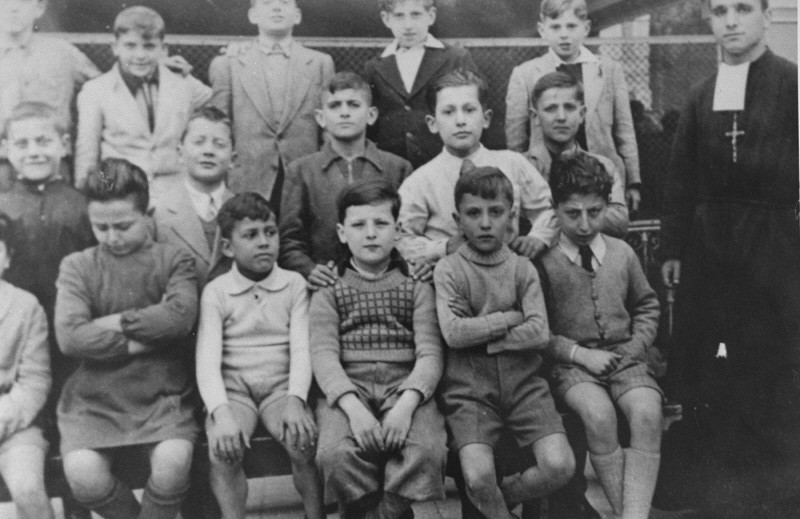
Rome
Rome after the German Occupation
At the time of the German occupation of northern and central Italy in early September 1943, there were approximately 12,000 Jews living in Rome. The German occupiers sought to include Italian Jews in the "Final Solution".
The commander of the German Security Police (Sipo) and the Security Service (SD) in Rome levied a ransom on local Jews, demanding about 110 pounds of gold in exchange for the safety of the Jewish community of Rome. Although the Jewish community delivered the ransom in late September 1943, the Germans still planned to deport Rome's Jews. The SS confiscated the registry of Roman Jews, which had been kept by the Jewish community at Rome's main synagogue, and deportations began in mid-October 1943. Wherever they lived, Jews were seized by the SS and taken to a military college in the center of Rome. After several days, the SS deported more than 1,000 Jews to the Auschwitz-Birkenau killing center. Subsequent roundups resulted in the arrest and deportation to Auschwitz of about another 800 Roman Jews. Almost all were killed in Auschwitz.

Hiding
Because Italian police did not participate in these roundups and most Italians objected to the deportations, many Italian Jews were able to go into hiding. For every Jew caught by the Germans in Rome, at least 10 escaped and hid, many in the Vatican. Located in the heart of Rome, the Vatican was headed by Pius XII, pope of the Roman Catholic Church; it had the status of a neutral sovereign state. During the occupation, Germany recognized and respected the neutrality of the Vatican. Pope Pius XII, however, failed to publicly condemn German policies and actions towards the Jews. Other Catholic institutions in Rome did offer aid and shelter to many Jews.

The Germans occupied Rome for nine months. While 1,800 Jews were deported from Rome, over 10,000 Jews survived. Most of them succeeded in hiding in Rome. American forces liberated the city on June 4, 1944, and Jews came out of hiding to participate in the liberation ceremony held at Rome's main synagogue.

